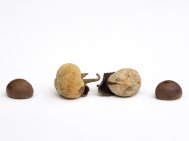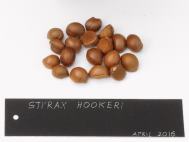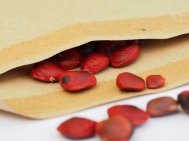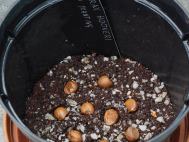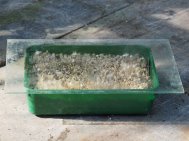- Shop Now
- Burncoose Specialities
- This Month
- Offers & Promotions
- RHS Chelsea Flower Show 2024
- 40 years at Burncoose
- Engage With Us
- Information, Help & Advice
- About Us & Our Services
- Terms & Conditions
- Log In / Register
Chapters
Styrax - Care Guide
Introduction
Asiatic species grow on forest slopes at fairly low altitudes. This means that they prefer a moist environment and milder winters but are capable of withstanding rather hotter summers than ours normally are. They may be prone to damage to the new growth from late frosts so some shade from early morning sun is advisable in a situation which will also catch the afternoon sun. These are mainly small trees and too much dappled shade throughout the day will reduce the number of flowers produced and inhibit the development of the tree.
Styrax prefer a well drained but moisture retaining soil with a slightly acidic pH. Exactly what most Cornish gardens have.
S. japonicus has been proven to withstand at least -15° of prolonged frost here in 1963 and other species can probably tolerate -10° although this has not been tested in recent years. They look like small hardy trees and, outside obvious frost pockets, there is no reason to suppose that they are not!
Propagation
One of the great attributes of styrax is that they all produce copious amounts of spherical seed which is usually ripe to pick in October when it turns brown and has fallen to the ground or is easily detached from the tree.
The seed needs a double dormancy. This requires a period of warmth followed by a period of cold for the best germination results. This means it is best to delay sowing until the spring so that the summer provides the necessary warmth followed by the cold in winter and the seeds will then germinate in the spring following sowing. Patience is needed!
Autumn sowing of fresh seed may well result in a partial germination in the next spring. However, full germination may take a further year. Watch out for mice, shrews and slugs in the meantime.
Styrax can also be rooted easily from softwood cuttings taken early in the summer and treated with a hormone rooting compound. The problem is, as with many types of deciduous tree cuttings, that while rooting is fairly easy, over-wintering the rooted cuttings and getting them to shoot away the next spring is not.
Early cuttings are likely to establish better root systems and it is best to insert them snugly into cell trays or plug trays to avoid any damage to the root systems. The cuttings need to be kept dry and frost free over winter and not potted on until new growth is well established.
Even obeying all these guidelines we have often struggled to overwinter more than a very few of what were nicely rooted cuttings in the autumn before.
Growing styrax from seed is probably easier and a better bet in the long run.
S. formosanus & hemsleyanus in June - Video Tip
&
Styrax japonicus ‘Emerald Pagoda’ - Video Tip
Styrax japonicus ‘Pendulus’ - Video Tip
Further Reading
We have a more detailed article on collecting, storing and growing woody shrub and tree seeds available if you wish to learn more.
RHS lecture notes from Caerhays - Stryax Hardy flowering 'Snowbell Trees'
Further reading and images in the Caerhays Garden Diary - Styrax

























